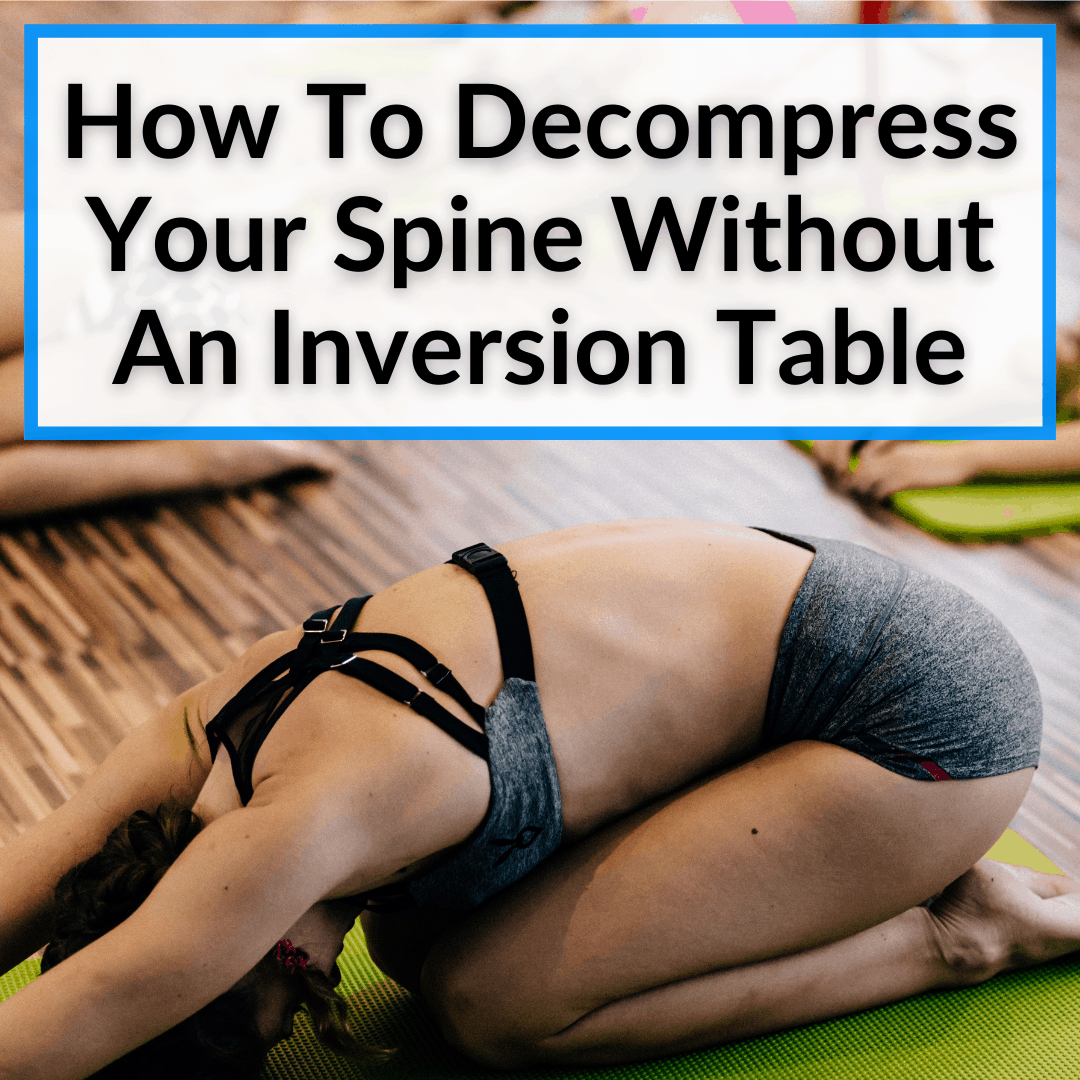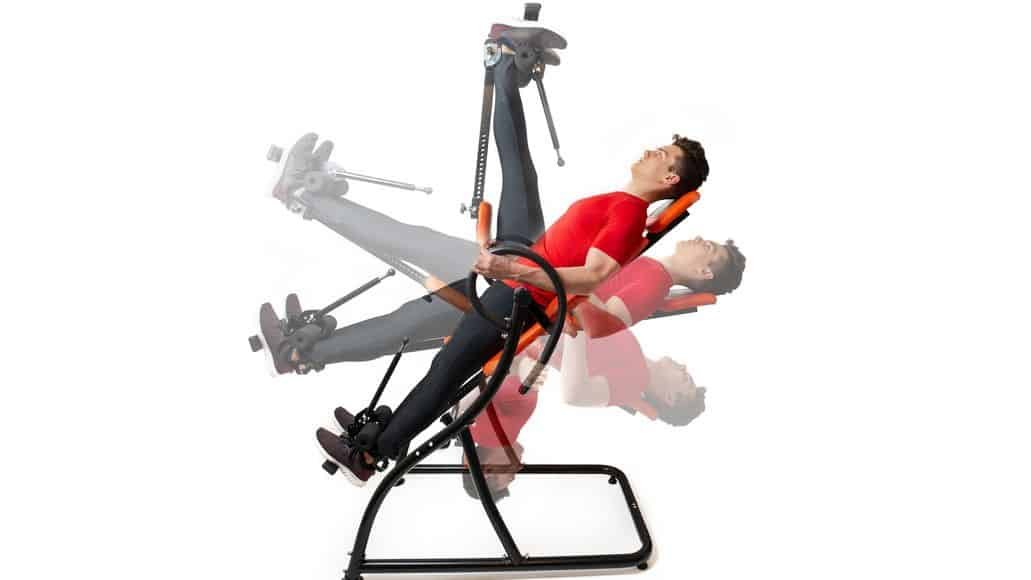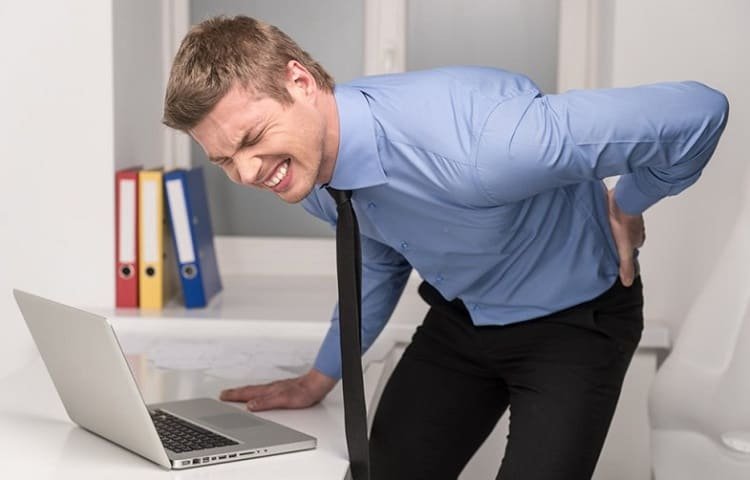 Gravity is a pain. Literally.
Gravity is a pain. Literally.
It compresses your spine throughout the day, which can cause serious back problems in the long run.
Decompression is a chiropractic technique to help reverse the damage of gravity on your spine.
The best way to decompress your spine is with an inversion table.
But those also carry a number of risks, especially if you have certain preexisting health issues.
They also cost money, whether you buy your own inversion table, or pay to use one at your chiropractor’s.
That’s where alternative spinal decompression techniques come in handy.
Keep reading to learn how to decompress your spine without an inversion table. We’ll also get into the main reasons why you might want to decompress your spine.
Table of Contents
How To Decompress Spine Without Inversion Table
If you don’t have an inversion table, that’s quite alright.
They can be expensive, especially the best inversion tables available. And they never include ankle pads, which is an extra (and necessary) expense.

Inversion tables are nice, but not necessary to decompress your spine.
You can hang upside-down in a variety of ways to begin decompression, which we’ve outlined in our article detailing how to hang upside down without an inversion table.
Unassisted, inversion tables can also pose potential problems, like joint damage to your knees or ankles. These dangers are much larger for those with preexisting conditions.
For that reason, it is often much safer to find other was to decompress your spine, even if those ways might not be quite as effective.
Other Ways To Decompress Your Spine At Home

Decompressing your spine can be done with certain levels of tension, and this does not have to be induced by an inversion table (although they are surely helpful).
Do these exercises and use these tips to decompress your spine at home, without having to strap yourself into an inversion table.
Cat Stretches
This yoga pose helps you straighten the muscles surrounding your spine (which help support it), and work those out to become stronger in the process, while also extending the vertebrae.
Imagine you are a catch stretching, with your head down and behind in the air. Notice the way the cat’s spine extends when they stretch in this manner. Yours should do the same.
Overhead Stretch
When you pull your arms up over your head and really raise them—to the point that you feel your shoulder blades engaging—you’re helping to stretch those vertebrae in your spine. The key here is holding your hands over your head for long enough to let the effects actually take root.
Pull Ups
When you exercise your upper body, you endure less back pain over time. Many people think this is just due to the posture-correcting nature of upper body strength exercises, and there’s some truth to that.
Once your muscles can bear more weight and pressure without being directly engaged, your posture does improve, and this helps your back. However, the nature of doing a pull up (where you’re actually using your arms and shoulder to pull your body up in proper form) will help to stretch your spine.
These are just a few examples of what you could be doing to decompress your spine at home. Inversion tables are useful, but you’re powerful enough on your own to make a change in how you manage back pain and prevent it from occurring in the future.
Why Do You Need To Decompress Your Spine?

We touched on this a few times already in this article and you may already be informed about all of the benefits, but we wanted to include it here anyway, just in case.
Spinal decompression comes with a slew of benefits that can help with pain management and your overall physical health. Let’s go over a few of them now.
Pain Management
Your back is made up of dozens of different muscles, and 24 vertebrae bones (normally 26, but some fuse together as you become an adult).
Over time, gravity forces these together, especially when you factor in that your spine is holding up portions of your skeletal system, your torso, and basically all of your body weight. Decompression helps manage pain by immediately removing all that stress off of your muscles and bones.
Spine Stretching
Normally done through an inversion table, spine stretching is one of the many reasons that inversion therapy in general is a good idea.
This seems like a simple concept, but what it actually does is slightly separate the discs in your back. This allows fluid to travel between the discs. This fluid carries nutrients and help your spine heal quickly, and more effectively.
For all intents and purposes, most people have unlubricated spines without the necessary fluid in between the discs to keep them healthy. This can lead to more serious injuries and disc fractures, or discs falling out of line completely (which causes a lot of pain and requires surgery).
Avoid Surgery
Spinal decompression is a way to possibly prevent spine surgery. It is sometimes used as a holistic way to treat the spine before fully exploring full-blown surgery as an option.
In many patients, it can prevent the need for invasive surgery altogether. This, of course, depends on the severity of your spinal issues and what it’s going to take to correct those issues.
Cost-Saving
You can get your own inversion table or use alternative methods, and avoid the expensive cost of going to a chiropractor on a regular basis.
Keep in mind that this isn’t a replacement for a chiropractor, but with their recommendations, this could lessen the number of times you have to pay for visits to them.
Overall, inversion therapy saves money on doctor visits, surgery, and pain management (medication and holistic expenses).
Spinal Decompression Without Inversion Table: Final Thoughts
Spinal decompression is something that you can do at home, with or without an inversion table. But you have to proceed with caution.
It’s important to talk to your doctor before attempting to use a spinal decompression table, on the off-chance that they recommend surgery depending on how severe your pain and condition is.
Inversion tables also carry a number of health risks, especially if you have preexisting conditions. Read Inversion Table Pros And Cons for more.
As always, consult a doctor before attempting any type of therapy at home. You may have issues that make the use of an inversion table too risky. In that case, definitely give some of the alternatives for spinal decompression we’ve listed here a try.
Note: This article was not written by a chiropractor or physician. While we research our articles and do our best to provide solutions, do not attempt anything revolving around spinal decompression, inversion, or pain management without seeking out help from your primary healthcare provider first. We are a website, not a medical community.
Leave a Reply